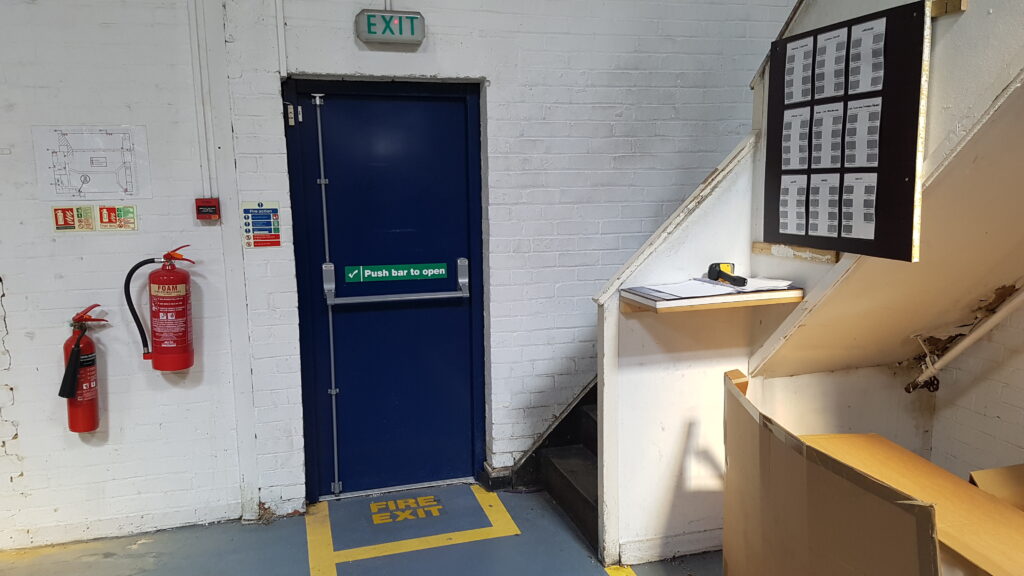Put simply a fire exit door does not have to be a fire rated fire door, whereas a fire door, must have proven a fire rating that is at least as high as the rest of the building’s structure.
For example, if the walls and stairwell of a block of flats are designed to resist fire for 30 minutes, then it is OK to fit a 30 minute fire rated door. However if the walls and stairwell are designed to resist fire for 60 minutes, a 60 minute fire rated door must be fitted. Sometimes doors with a 30 minute integrity AND 30 minute insulation are specified, meaning that for the first 30 minutes of a 60 minute fire door test, if one was to touch the non-fire side of the fire door with one’s hand, it would not be burnt for the first 30 minutes of any fire’s duration.
As both the Grenfell disaster and subsequent building fire inspections have shown in Camden alone, where over 1,000 internal wooden fire doors were found to have been removed during subsequent refurbishments, which for those who live in multi-occupancy buildings is a shocking revelation, as frankly fire rated doors can mean the difference between life and death.
External fire rated fire doors are usually made of steel and any glazing within them should be made with glass that is fire rated. There are a number of specially modified toughened soda-lime glass types available for fire-resistant applications in very specific framing systems. These doors are highly specialist, expensive and should only be fitted by properly trained and accredited fire rated steel door installers.
A fire door to most householders tends to be an internal wooden one whose purpose is to enable an escape route through a property in case of a fire and help to compartmentalise a fire, preventing the spread of smoke and flames. Sadly as recent events have shown, as a necessity, fire doors should be kept closed at all times, whilst still enabling safe swift egress.
Here in the United Kingdom a fire resisting doorset should be subjected to either a British Standard Fire Test BS 476 Part 22 1987, or a BS/EN 1634-1 2000 test. The results are recorded by an accredited test agency and provided in a report which detail such things as constructional details, distortion data and pressure readings.
A fire door is not just the door leaf or sash. It is the entire door assembly comprising the door frame, any glazing, intumescent fire and smoke seals and all the door furniture, such as hinges, door closers, latches and locks. Every fire door to be legal must be third party tested and certificated with all its components in place.
Fire exit doors on the other hand are not fire rated doors and tend to be fitted with push bars to permit rapid evacuation of a building and can be made from aluminium, composite, steel, timber and UPVC as amazingly enough do not have to be fire resistant. This is not to say fire exit doors cannot be fire rated, as they can be, it is just as things stand at the present they don’t have to be.
Fire exit doors should be well signed and illuminated, so can be easily located in a blackout situation. Fire exit doors should open out towards the best place that offers means of escape. Fire exit doors can also be opened from the outside if for example a panic bar with a keylock override is fitted. Fire exits and fire exit doors must never be obstructed.
Hazlemere Commercial have been supplying and fitting bespoke fire exit doors fitted with special push bars to allow rapid escape for years in both aluminium and UPVC, both as single leaf doors and French doors. Hazlemere Commercial are often asked for fire rated doors as part of larger window and door projects, and Hazlemere also supply and fit timber fire rated doors on smaller projects as and when these are a requirement of the Building Regulations, such as when a fire door is required between a conservatory and a garage in order to comply.


